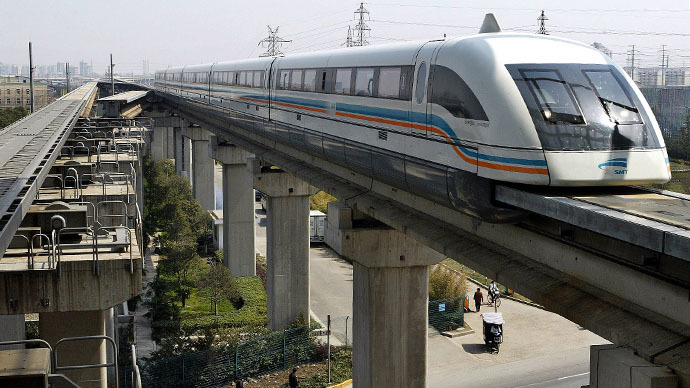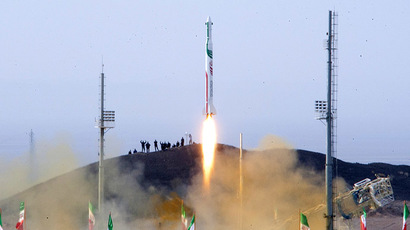China tests 3,000-kph ‘super-Maglev’ train concept

Chinese researchers at the Applied Superconductivity Laboratory of Southwest Jiaotong University claim their fast transportation concept based on magnetic levitation (Maglev) technology could potentially be three times faster than an airplane.
Maglev technology was first proposed in the mid-20th century. Nowadays, the Shanghai Maglev Train can reach speeds of over 430 kilometers (260 miles) per hour and is the world’s fastest passenger-carrying train.
The “Super-Maglev” could, however, beat even that. Chinese researchers have been testing a concept train encapsulated in a vacuum tube, thus decreasing the speed limitations imposed by air resistance on regular Maglev trains.
Should the project be successful, the workable prototype will set the standard for the future evacuation tube transportation (ETT).
“ETT systems might allow HTS Maglev trains to attain speeds in a new order of magnitude, such as super-high 3,000 km (1,800 miles) per hour, which could be applied to some military or space launch systems,” Dr. Deng Zigang, who’s been developing the technology for years, told The Daily Mail.
Enclosed tube maglev system capable of 1,800 mph tested in China http://t.co/MhA25cCYJCpic.twitter.com/moxDumJOY1
— Michael (@_cypherpunks_) May 9, 2014
At the moment, the testing laboratory looks like a toy train track with the vehicle running inside a 6-meter diameter vacuum loop, reaching a speed of about 48 kilometers per hour. But the speed is only limited by the small radius of the ring, Dr. Deng Zigang says.
He says that if the speed exceeds 400 km per hour, more than 83 per cent of traction energy is wastefully dissipated in air resistance. But with a vacuum tube design, that speed could be surpassed in the future.
The researcher doesn’t limit his innovation to land-based transportation only, and hopes that similar vacuum tube technology would be used to launch space vehicles, or enable super-high speeds for military weapons.
Chinese authorities, on the other hand, could utilize the novelty in their grand scheme to link the country with Russia, Canada and the United States with a high-speed railway.














